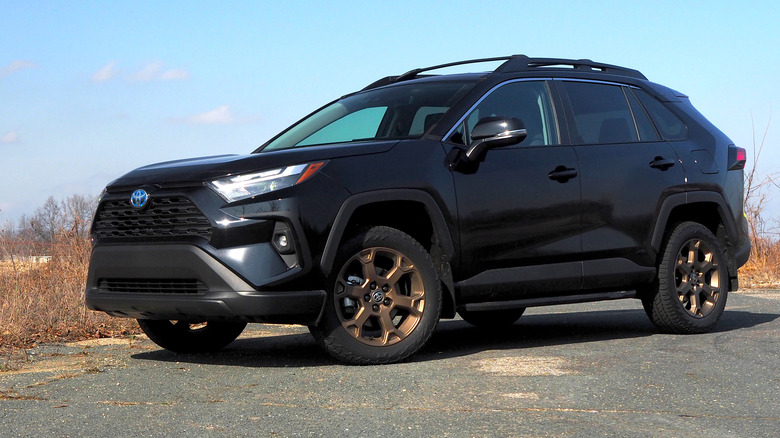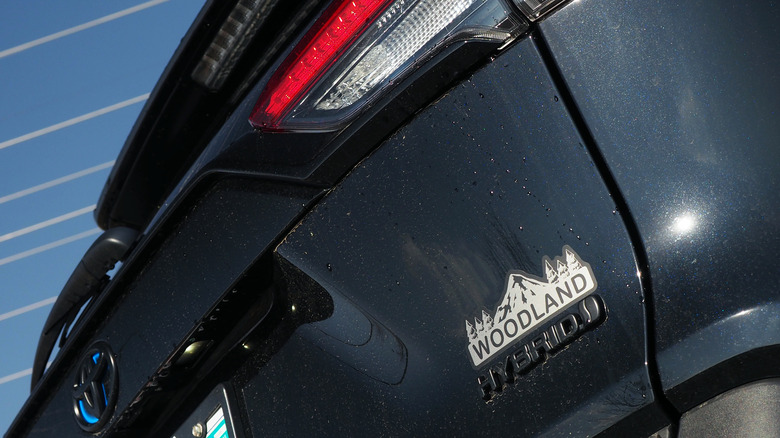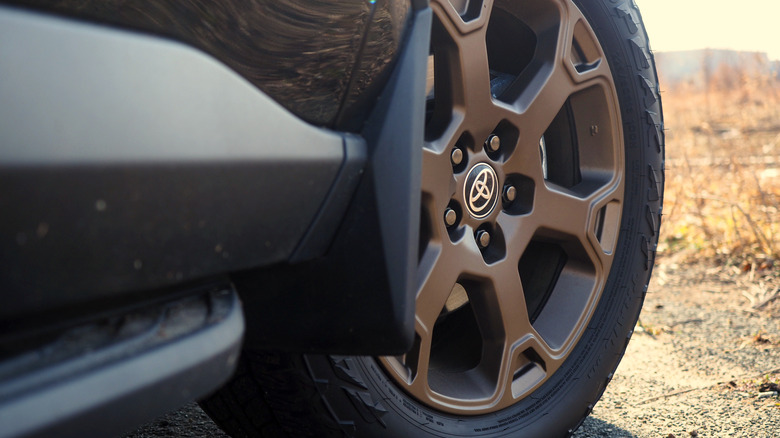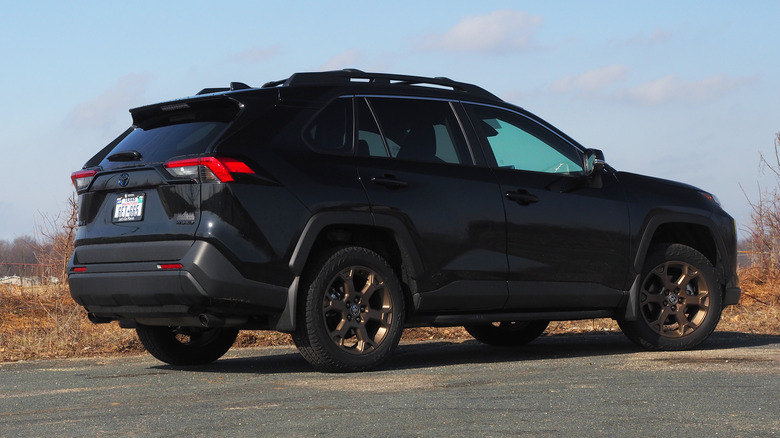Does The 2023 RAV4 Woodland Edition Prove Hybrids Can Make It Off-Road?
You can't accuse the 2023 Toyota RAV4 Hybrid Woodland Edition of not looking the part. Bronze wheels, standard roof rails, and blacked-out lower bumpers and overfenders leave the electrified SUV looking ripe and ready for the trail, while TRD-tuned suspension and beefy Falken Wildpeak All-Terrain tires promise sure-footedness in the mud. What might leave some off-roaders uncertain, though, is Toyota's hybrid drivetrain.
Unlike the RAV4 TRD Off-Road, which has a mechanical all-wheel-drive system and a 2.5-liter four-cylinder gas engine, this Woodland Edition version of the SUV packs a far more complex hybrid arrangement. The front gets a 2.5-liter four-cylinder gas engine and an electric motor driving the front wheels. The rear, though, is mechanically unconnected from that.
Instead, Toyota uses a separate electric motor to drive the rear wheels. The automaker calls it "Electronic On-Demand All-Wheel Drive," and to be fair it doesn't bill it as the be-all and end-all of overlanding. Instead, it plays up its all-weather capabilities, its improvements on gravel and other low-traction surfaces, and the fact that it can deliver that without compromising life on the highway or around the city in the process.
Electrified vehicles have some inherent advantages
Even if the RAV4 Hybrid Woodland Edition isn't necessarily the go-anywhere SUV of your dreams, don't assume it means that's off-limits to all electrified vehicles. Though the pickings are certainly slimmer than for gas-powered trucks intended to keep going when the road runs out, hybrids and even fully-electric models can actually be surprisingly capable on off-road courses.
One of the primary advantages is in how electrified vehicles deliver their power. Internal combustion engines don't reach their maximum horsepower and torque until they've reached a certain engine speed. In contrast, electric motors deliver peak torque effectively from the get-go. That can also make it easier to modulate the power being delivered since the reaction between the accelerator pedal and what the drivetrain does is more immediate.
For it to be most usable, though, the rest of the vehicle needs to be set up accordingly. That means not only the right amount of torque, but the right tires, suspension, and other factors: in short, the considerations any SUV worth taking seriously out in the rough stuff should be making.
There's more to off-roading than your engine
It's there, more than the drivetrain, that the RAV4 Hybrid Woodland Edition stumbles. Toyota's electrified SUV may wear the same shoes as the gas-only TRD Off-Road version of the RAV4, but its 8.1-inches of ground clearance is the same as its road-focused sibling, and half an inch less than the TRD Off-Road. A 19-degree approach angle, and a 21-degree departure angle match that SUV.
Subaru's Crosstrek Hybrid offers something broadly similar, albeit with a plug-in hybrid drivetrain (Toyota has a PHEV version of its SUV, the RAV4 Prime, but it's not offered in Woodland Edition form). It has 8.7 inches of ground clearance, a 17.1-degree approach angle, and a 28.6-degree departure angle.
However they both fall well short of what's probably the most off-road capable hybrid right now, Jeep's Wrangler 4xe. It brings at least 10 inches of ground clearance to the mud party, trim depending, along with a 44-degree approach angle and 35.6-degree departure angle. Jeep also allows drivers to switch between 2WD High, 4WD Auto, 4WD High, and 4WD Low themselves.
The future of electric off-roading is bright
Even then, it feels like we're just at the start of seeing how electric vehicles could revolutionize off-road driving. Tri-motor and even quad-motor models, like the Hummer EV and Rivian R1T, can apply their not-inconsiderable torque with far greater precision to each wheel, refining the experience that mechanical differentials have long offered on ICE SUVs. At the same time, they can do that without the noise that would traditionally be associated with a gasoline truck.
For Toyota, it's clear, the focus is still primarily on on-road use. There's a Trail drive mode in the RAV4 Hybrid Woodland Edition, but drivers don't get the sort of granular control over how power is applied that they do in the Wrangler 4xe.
Then again, the Jeep lacks the Toyota's on-road manners — it's louder, bumpier, and generally feels less refined — and for the RAV4's audience that probably makes more of a difference in everyday use. Indeed, arguably the most appealing part of the Woodland Edition is how user-friendly it is. Respect its limits (which means don't go charging into an off-road course that 4Runner owners might think twice about), and it should get you out of muddy ditches and unpaved paths as easily as it handles the highway.



